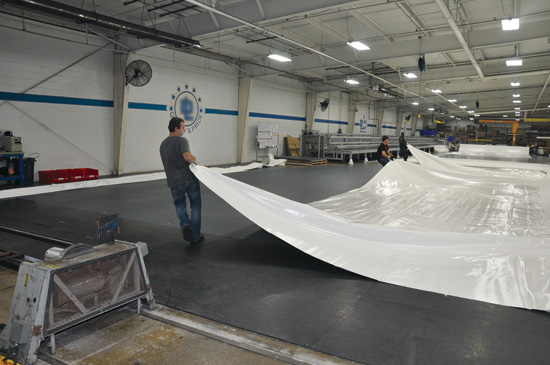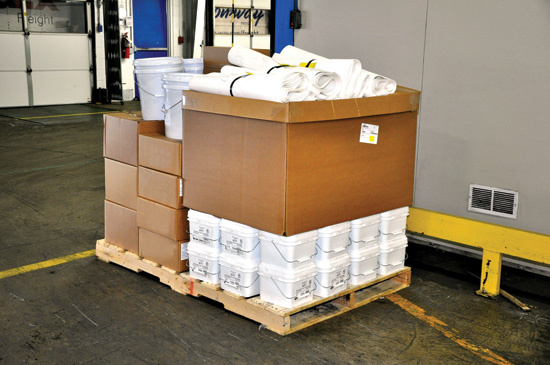The Architect’s Guide to Specifying Sustainable Single-Ply Roofing Membranes: NSF/ANSI 347
Where Did It All Begin? Environmentally Sustainable Source Materials
The purpose of this section is to make sure the membrane manufacturer is informed about the environmental implications of the material composition of its products, and this includes the packaging. This then encourages the use of component materials from sustainable inputs, such as recycled materials and bio-based resources. At the very least, the manufacturer should report materials at certain chemical measurements that would, upon disposal, cause the product to be classified as hazardous waste.

Photo courtesy of Duro-Last
The effort to achieve an NSF/ANSI 347 rating must start from the very beginning of the material’s life cycle.
The standard puts a lot of emphasis on using recycled content, or content from a bio-based source. Most emphasis is put on post-consumer recycled content, which is valued at 100 percent of its weight, with a lesser emphasis on pre-consumer recycled content, valued at 50 percent of its weight. The bio-based content is more valuable, point wise, when it's from such certified operations as organic, sustainable agriculture, or sustainably certified forestry. Other bio-based content is given half the points per weight.
Concern with Chemicals
Not all chemicals are created equal, and not all chemicals are toxins and carcinogens. The “Chemicals of Concern” section of the standard has as its goal to encourage the use of more environmentally friendly chemicals and eliminating the use of chemicals of concern. The latter grouping includes those listed on some of the most widely recognized, science-based hazard lists from the International Agency on the Research of Cancer, the National Toxicology Program, U.S. Occupational Safety and Health Administration, California Proposition 65, and the U.S. Environmental Protection Agency Integrated Risk Information System database. Companies can earn points by avoiding the chemicals on these hazard lists in concentrations greater than 1000 ppm or, 0.1 percent. The manufacturer, to earn one credit, may create a report evaluating its product formulation against the hazard lists. Further eliminating or reducing the concentration of any known hazardous substance can earn up to another 5 points. The purpose of this section is to inform the manufacturer of the human health and ecological hazards associated with the product's raw materials. The credits are weighted heavier on the reduction and elimination credits to encourage the manufacturer to use environmentally compatible products and eliminate the use of chemicals with known hazards.










